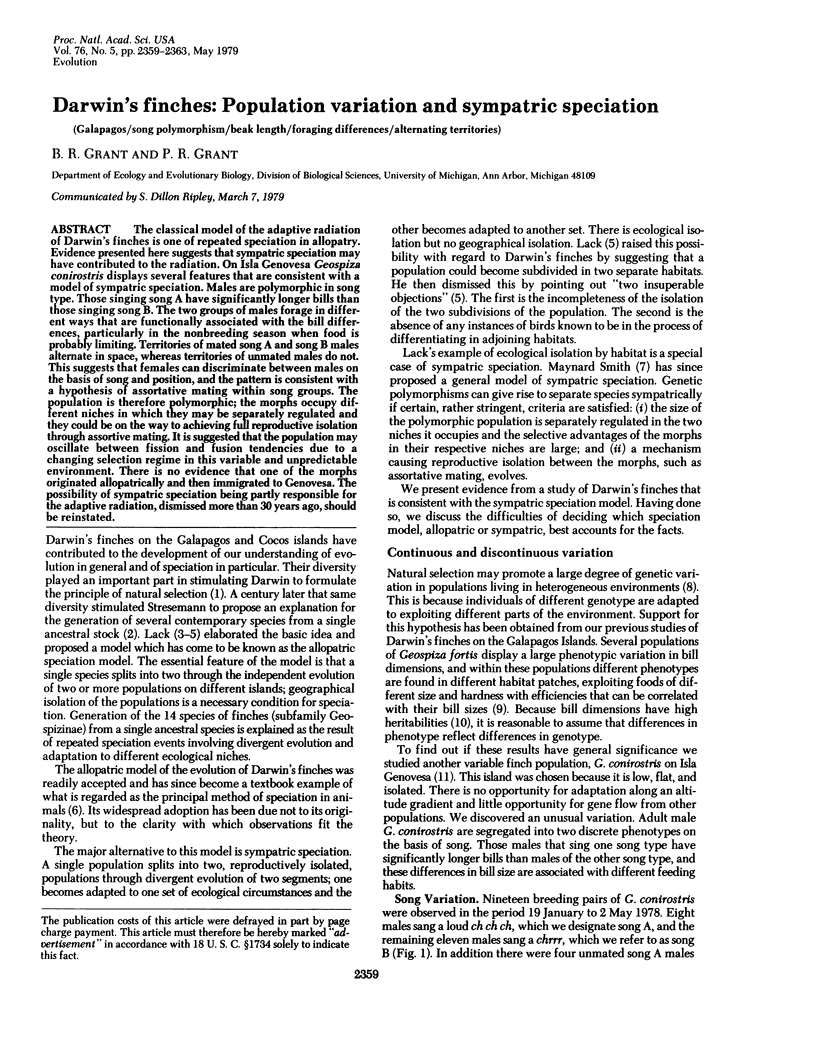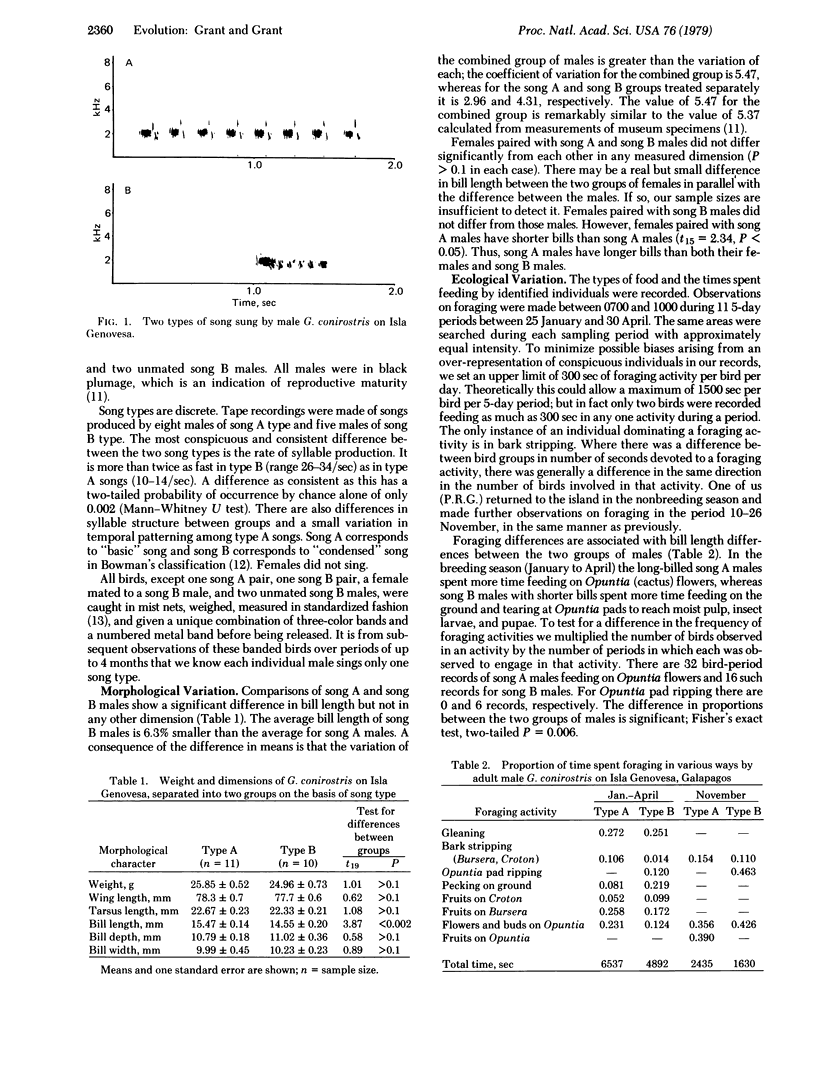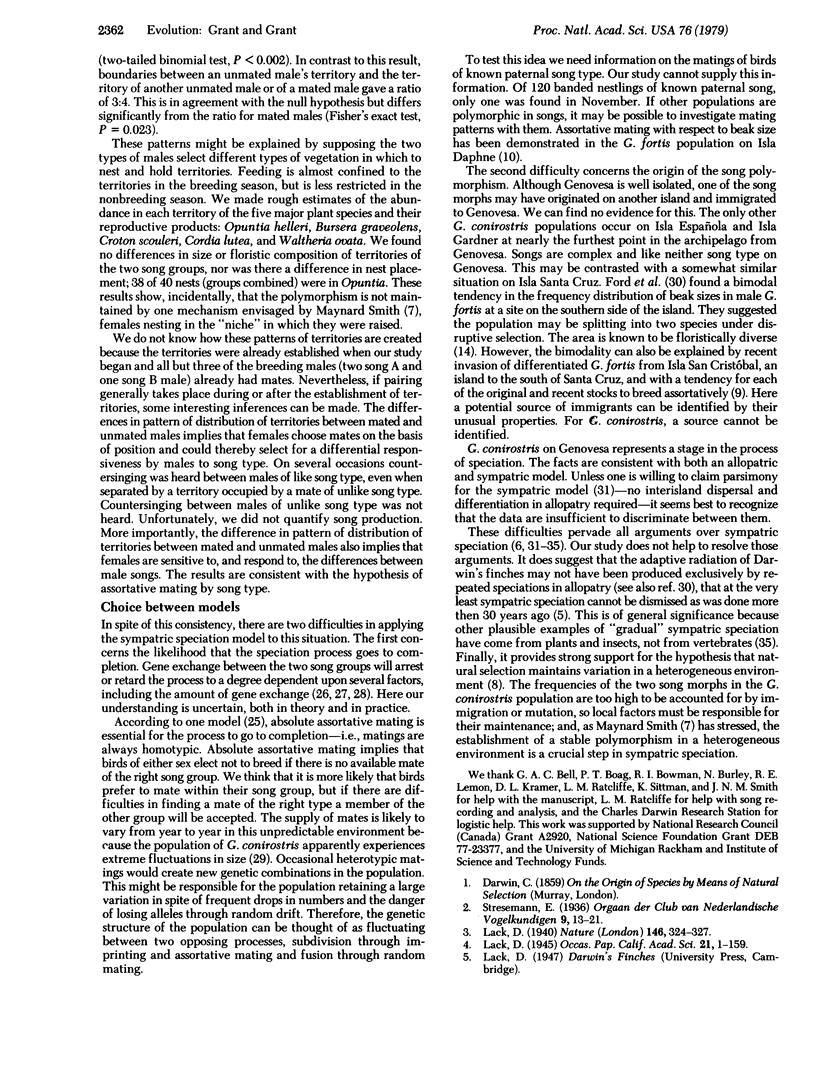Abstract
The classical model of the adaptive radiation of Darwin's finches is one of repeated speciation in allopatry. Evidence presented here suggests that sympatric specification may have contributed to the radiation. On Isla Genovesa Geospiza conirostris displays several features that are consistent with a model of sympatric speciation. Males are polymorphic in song type. Those singing song A have significantly longer bills than those singing song B. The two groups of males forage in different ways that are functionally associated with the bill differences, particularly in the nonbreeding season when food is probably limiting. Territories of mated song A and song B males alternate in space, whereas territories of unmated males do not. This suggests that females can discriminate between males on the basis of song and position, and the pattern is consistent with a hypothesis of assortative mating within song groups. The population is therefore polymorphic; the morphs occupy different niches in which they may be separately regulated and they could be on the way to achieving full reproductive isolation through assortive mating. It is suggested that the population may oscillate between fission and fusion tendencies due to a changing selection regime in this variable and unpredictable environment. There is no evidence that one of the morphs originated allopatrically and then immigrated to Genovesa. The possibility of sympatric speciation being partly responsible for the adaptive radiation, dismissed more than 30 years ago, should be reinstated.
Keywords: Galapagos, song polymorphism, beak length, foraging differences, alternating territories
Full text
PDF




Selected References
These references are in PubMed. This may not be the complete list of references from this article.
- Grant P. R., Grant B. R., Smith J. N., Abbott I. J., Abbott L. K. Darwin's finches: population variation and natural selection. Proc Natl Acad Sci U S A. 1976 Jan;73(1):257–261. doi: 10.1073/pnas.73.1.257. [DOI] [PMC free article] [PubMed] [Google Scholar]
- Haigh J., Smith J. M. Can there be more predators than prey? Theor Popul Biol. 1972 Sep;3(3):290–299. doi: 10.1016/0040-5809(72)90005-6. [DOI] [PubMed] [Google Scholar]
- Hendrickson H. T. Sympatric speciation: evidence? Science. 1978 Apr 21;200(4339):345–346. doi: 10.1126/science.200.4339.345. [DOI] [PubMed] [Google Scholar]
- Tauber C. A., Tauber M. J., Nechols J. R. Two genes control seasonal isolation in sibling species. Science. 1977 Aug 5;197(4303):592–593. doi: 10.1126/science.197.4303.592. [DOI] [PubMed] [Google Scholar]
- Thwaites W. M., Davis C. H., Wallis-Biggart N., Wondrack L. M., Abbott M. T. Urea: obligate intermediate of pyrimidine-ring catabolism in Rhodosporidium toruloides. J Bacteriol. 1979 Mar;137(3):1145–1150. doi: 10.1128/jb.137.3.1145-1150.1979. [DOI] [PMC free article] [PubMed] [Google Scholar]


